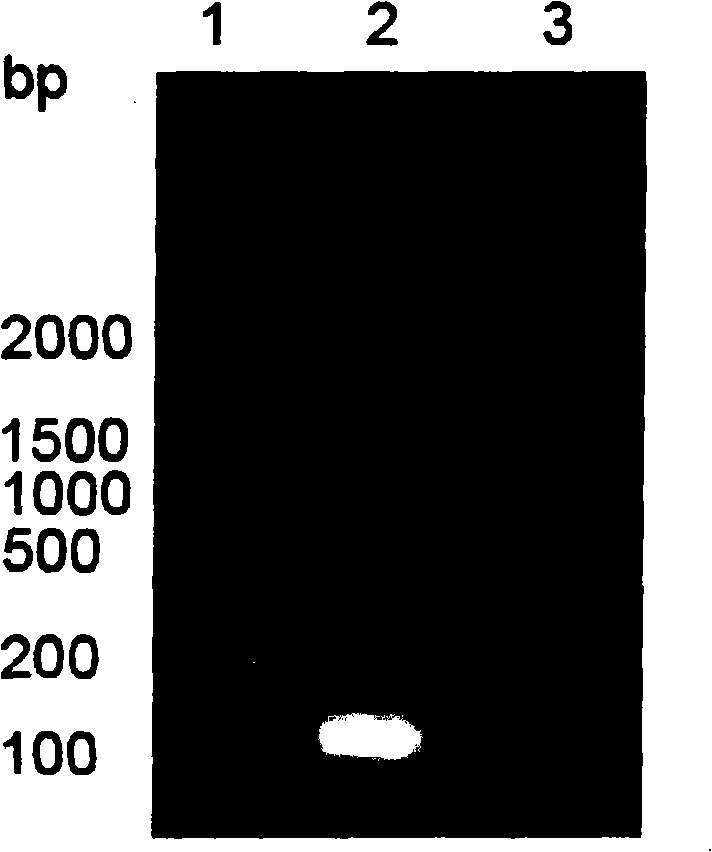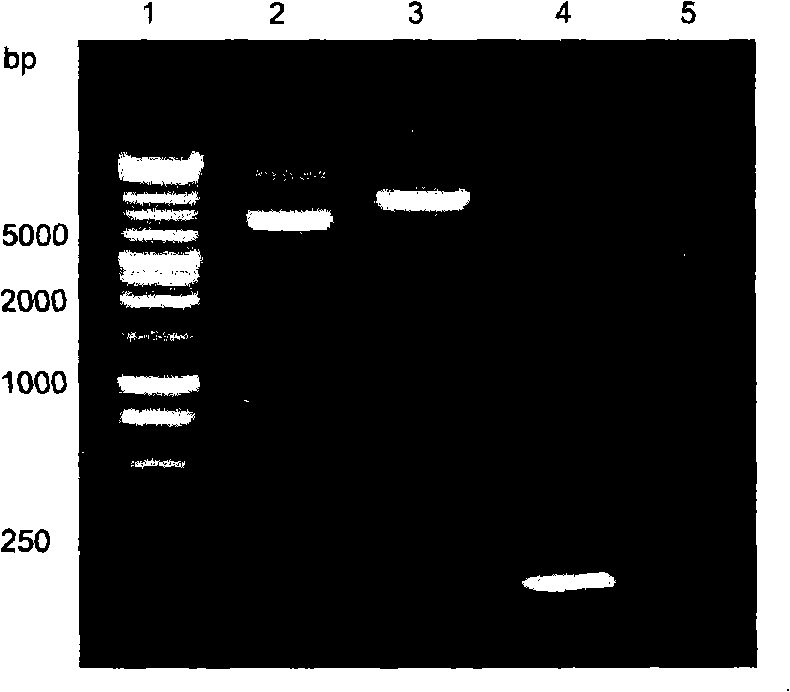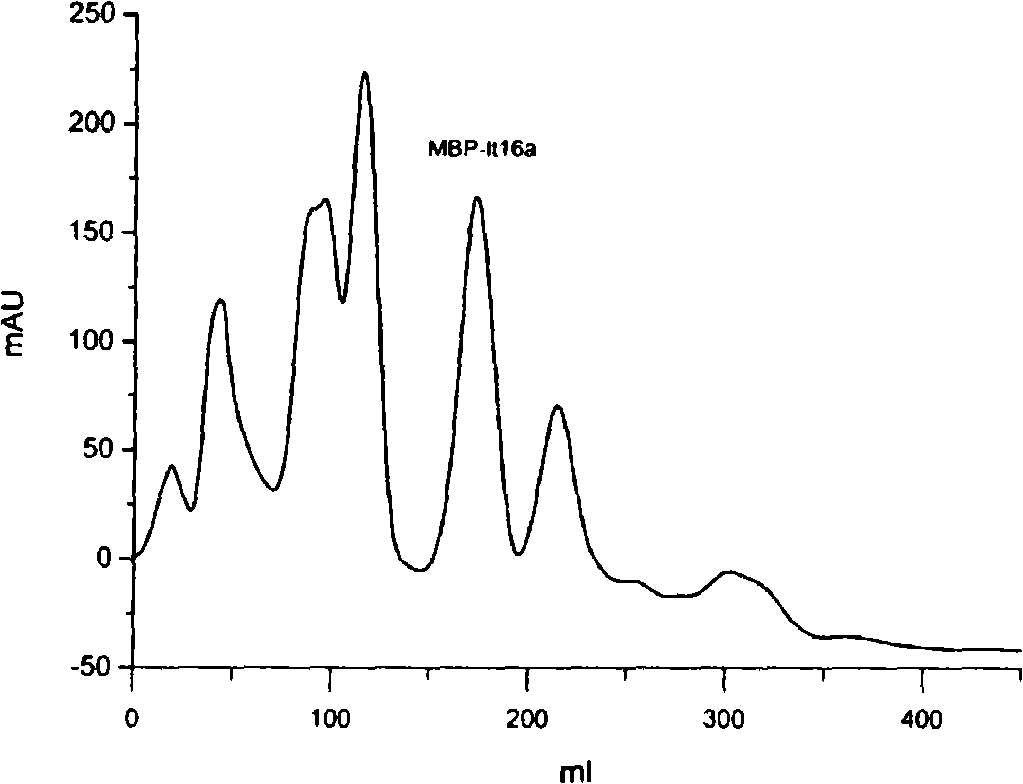Novel conus P-superfamily toxin sequence, preparation method and uses thereof
A technology of cono snail and sequence is applied to the new signal cono snail M-superfamily toxin sequence, preparation and application fields, which can solve the problems of in vitro expression of rare cono toxin genes and the like
- Summary
- Abstract
- Description
- Claims
- Application Information
AI Technical Summary
Problems solved by technology
Method used
Image
Examples
Embodiment 1
[0056] Embodiment 1: Construction and identification of signal cono venom cDNA library
[0057] Extraction of total RNA and synthesis of cDNA: Isolate the venomous tubes of the signal cone snail in the South China Sea, and extract the total RNA of the virulent tubes according to the instructions of Gibco BRL's TRIZOL LS reagent. Take 1 μg signal cono venom total RNA with SMART IIIolignuclotide (5'-AAGCAGTGGTATCAACGCAGAGTGGCCATTATGGCCGGG-3') and CDSIII / 3'PCR primer (5'-ATTCTAGAGGCCGAGGCGGCCGACATG-d(T) 30 N -1 N-3') was reverse transcribed to synthesize the first strand to obtain 10 μl of cDNA first strand product.
[0058] Construction and Identification of Signaling Cono Virus Tube cDNA Library: Extraction of cDNA For ligation reactions, plate after transformation. Single clones were picked from the plate for preservation and a certain number of single clones were randomly picked for sequencing and bioinformatics analysis.
Embodiment 2
[0059] Example 2: Sequence Analysis of Conotoxin Gene Lt16.1
[0060] The plasmid and sequence of the South China Sea signal cone neurotoxin gene Lt16.1 are from the EST sequence cloned from the South China Sea signal cone venom venom cDNA library. The Nanhai signal cono neurotoxin gene Lt16.1 encodes a precursor peptide consisting of 83 amino acid residues, and the mature peptide of the precursor peptide consists of 29 amino acid residues.
[0061] Using BLAST N and BLAST X (http: / / www.ncbi.nlm.nih.gov / BLAST) algorithms to search for homology of the tested nucleotide and derived protein sequences in existing public databases such as GenBank. Potential reading frames (ORFs) were mapped using SEQTOOLS 8.0. Sequence homology comparisons were performed using CLUSTAL X software. Protein signal peptide sequence prediction is performed through the website http: / / www.cbs.dtu.dk / services / SignalP. The molecular weight, theoretical isoelectric point, charge distribution and stability...
Embodiment 3
[0062] Embodiment 3: Construction of signal Cono M-superfamily toxin gene Lt16.1 expression plasmid
[0063] The Lt16.1 gene sequenced by the signal cono venom cDNA library, according to the amino acid sequence of its encoded mature protein, combined with the multiple cloning site of the pMAL-p2X plasmid, designed the amplification primers for the Lt16.1 gene fragment, as shown below . An Xmn I restriction site (GAA GGA TTT) was introduced into the upstream primer, and a HindIII restriction site (AAG CTT) and a double stop codon (TTA TTA) were introduced into the downstream primer. Perform PCR amplification with the above two primers to amplify the nucleotide sequence encoding the mature protein in the Lt16.1 gene. After the PCR product is digested with Xmn I and HindIII and connected to the pMAL-p2X vector, the mal E gene, protease Factor Xa recognition site sequence, nucleotide sequence of Lt16.1 gene encoding mature protein and terminator TTA TAA were fused together to for...
PUM
| Property | Measurement | Unit |
|---|---|---|
| molecular weight | aaaaa | aaaaa |
Abstract
Description
Claims
Application Information
 Login to View More
Login to View More - R&D
- Intellectual Property
- Life Sciences
- Materials
- Tech Scout
- Unparalleled Data Quality
- Higher Quality Content
- 60% Fewer Hallucinations
Browse by: Latest US Patents, China's latest patents, Technical Efficacy Thesaurus, Application Domain, Technology Topic, Popular Technical Reports.
© 2025 PatSnap. All rights reserved.Legal|Privacy policy|Modern Slavery Act Transparency Statement|Sitemap|About US| Contact US: help@patsnap.com



